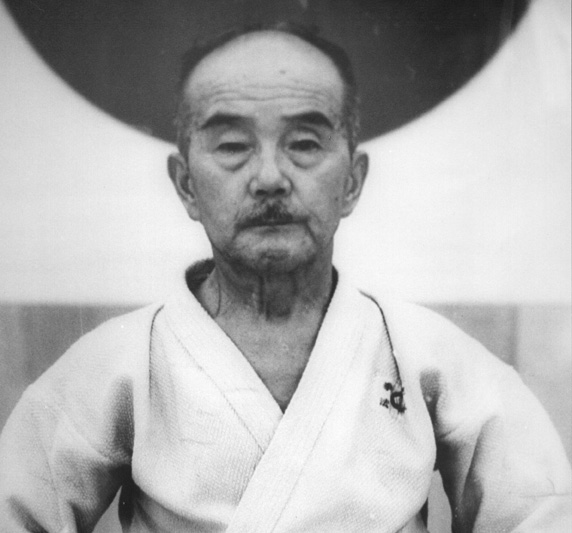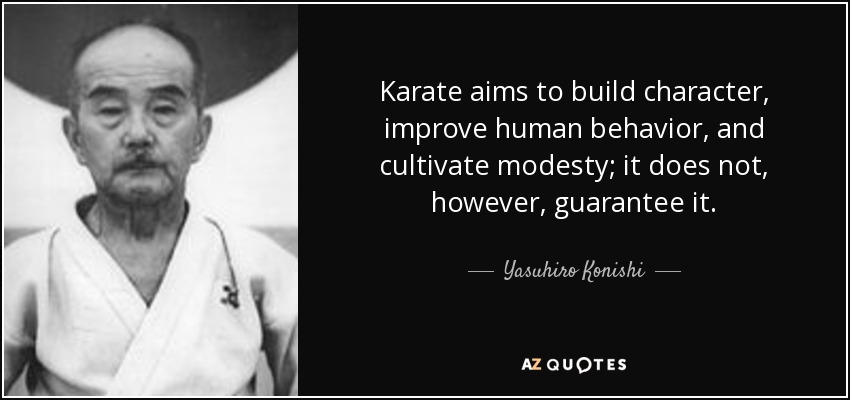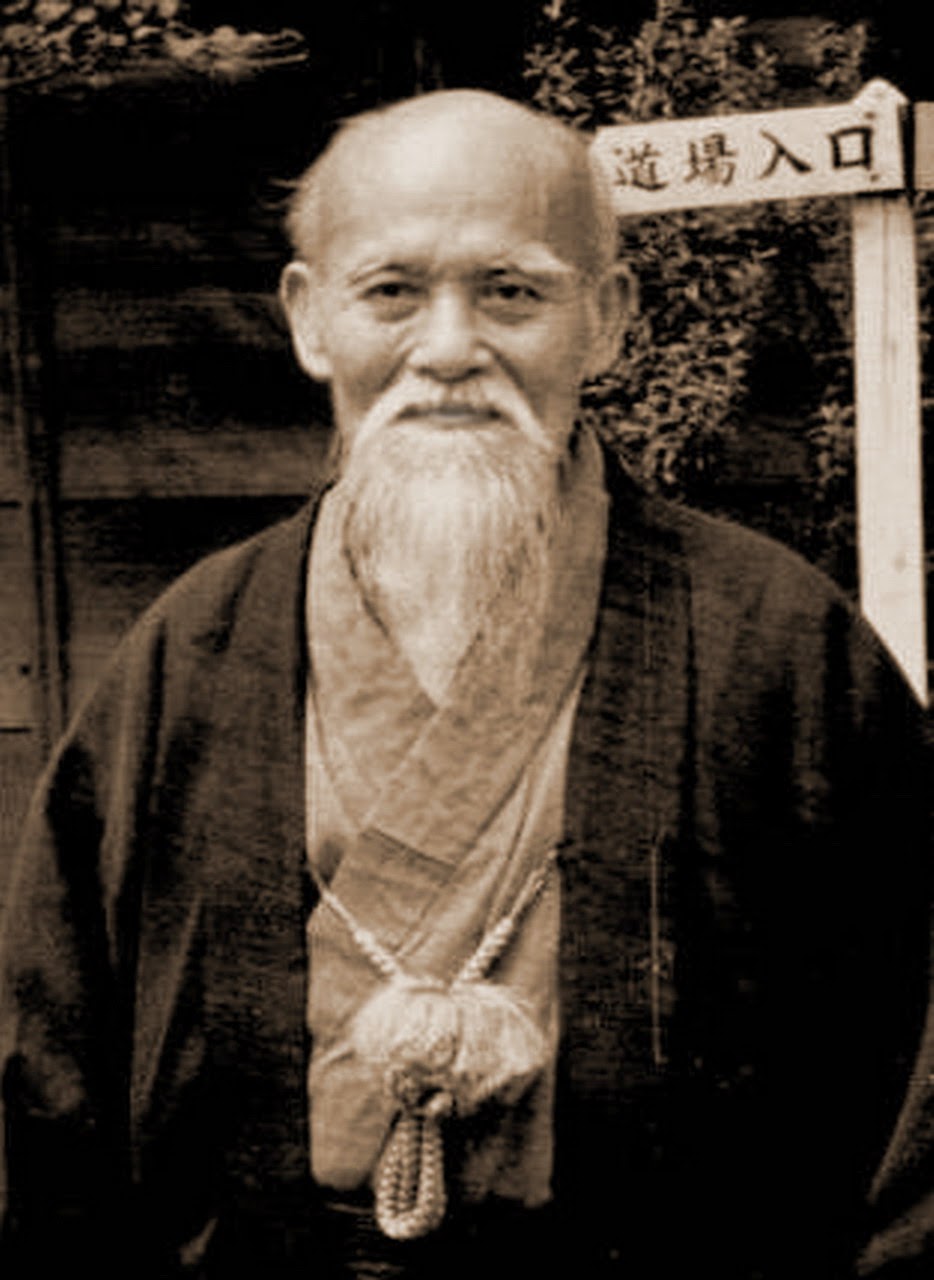History of Shindo Jinen-ryu

The World Budo Alliance is proud to present the History of Shindo Jinen-Ryu as part of the preservation of history of martial art project. This style is a steady mix of Okinawan and Japanese Karate styles. As such, it uses both deep and natural stances. And counting all the types and sub-categories of kata that students learn, there are more than 60 in all.
Importantly Shindo Jinen Ryu (神道自然流) is a form of karate that was founded in 1933 by Yasuhiro Konishi.
The Naming of Shindo Jinen Ryu
Most of all Konishi believed that if one lives a moral life. Therefore one is naturally following the divine way. Thus extending this idea, he posited that, if training in karate in a natural way leads one to mastery of one's body. Thus knowledge and experience are vastly increased.
And the foundation for naturally living a moral life is established. Therefore Konishi named his own style Shindō jinen-ryū. ("godly, natural style, complete empty-handed way").
History of Shindo Jinen-ryu
Thus prior to learning Karate, founder Yasuhiro Konishi had studied traditional Japanese martial arts at Takenouchi-ryū, Musō-ryū, Jikishinkage-ryū. As well as Kyōshinmeichi-ryū, Ono-ha Ittō-ryū and Shindō Munen-ryū schools.
Then in 1924, he began studying Karate under Gichin Funakoshi. And together with Hironori Otsuka (founder of Wado-ryu Karate). Most of all who was also a disciple of Funakoshi, whom with he would conceive practice of competitive Karate. Subsequently, Konishi learned Karate from Motobu Choki and Kenwa Mabuni (founder of Shito-ryu Karate). And also learned Aikido (then Daito-ryu Aikijujutsu) from Morihei Ueshiba.
And he would additionally learn Nanban Sattō-ryū Kenpō from Seiko Fujita. As well as go study Jiu-jitsufrom Yōshin Koryū, Shiba Shin-Yo-ryu, Fusen-ryu, and Yagyu Shingan-ryu.
Therefore in 1933, he would compile all the techniques he had learned into Shindō jinen-ryū style. Konishi followed the path of karate and would teach that "Karate is based on the fact that no one hits you and no one hits you."
Yasuhiro Konishi

Important is that Yasuhiro Konishi was born in 1893 in Takamatsu, Kagawa, Japan. And in 1899 he began training in Muso Ryu jujutsu, then kendo. And when he was 13 and later, Takenouchi-ryūjujutsu and judo. Then in 1915, he entered Keio University in Tokyo.
Most of all Konishi's first exposure to te was through Tsuneshige Arakaki, who was from Okinawa. Konishi quit his job in 1923 to open a martial arts centre. Thus naming his dojo the Ryobu-Kan ("The House of Martial Arts Excellence"), Konishi provided instruction in kendo and jujutsu.
Training with Japanese Masters
Important to note in September 1924, Hironori Ohtsuka and Gichin Funakoshi came to the Keio University kendo training hall. And with Konishi's help, Funakoshi established a to-te club at Keio University. And Konishi, Funakoshi and Ohtsuka were the instructors and with the addition of te to Konishi's curriculum of jujutsu, kendo. Also western boxing, modern karate was born.
And as karate gained popularity, a number of Okinawan masters traveled to Japan. Many of these martial artists visited the Ryobu-Kan. Among them were Choki Motobu, Kenwa Mabuni and Chojun Miyagi. Therefore Konishi considered Motobu a martial arts genius and trained with him often. A native of Okinawa, Motobu did not speak Japanese well.
So Konishi trained less frequently with Miyagi but Miyagi presented him with a manuscript, "An Outline of Karate-Do", dated March 23, 1934. And then Konishi trained with Kenwa Mabuni, who resided at Konishi's house for ten months in 1927 and 1928. Therefore Mabuni was known for his knowledge of kata. Mabuni and Konishi later worked together to develop the kata Seiryu.
The Influence of Morihei Ueshiba

Most of all the History of Shindo Jinen-ryu must also include that Konishi also studied under Morihei Ueshiba. And when Konishi demonstrated Heian Nidan to Ueshiba. Who's opinion was that Konishi should cease pursuing such ineffective techniques. Therefore Konishi created a kata he named Tai Sabaki (“body movement”). A notable difference from most karate kata was that it was an unbroken sequence of actions.
Very importantly Morihei Ueshiba remarked, "The demonstration you did just now was satisfactory to me and that kata is worth mastering." Konishi would later develop two more forms based on the same principles, and he named these three kata Tai Sabaki Shodan, Tai Sabaki Nidan and Tai Sabaki Sandan.
Seiryu (青柳) Kata
Important is that during the 1930's, the Japanese government was largely controlled by the military, and around 1935. And the commanding general of the Imperial Japanese Army approached Konishi and asked him to develop self-defense techniques for women serving in the Japanese Government Railways.
At the time, Konishi, Ueshiba, Mabuni and Ohtsuka were training together almost every day. And Konishi asked Mabuni to work with him on delivering what the government had requested.
Therefore together, the two men developed a kata incorporating significant elements of their respective styles, Shindō jinen-ryū and Shito-Ryu. As well as feedback from Morihei Ueshiba, who advised them on changes intended to more closely tailor the techniques. And this was included in the form to the needs of women, for whom it was being designed.
Most of all the kata that resulted from the collaboration between these three masters. Seiryu (青柳, meaning Green Willow) - includes core principles from karate, aikido and jujutsu. Thus became part of the training regiment for female railway workers.
World War II and Karate
And with Japan embroiled in WW11 the continued evolution and refinement of karate plateaued. And many practitioners enlisted to fight for their country. With Japan's surrender in 1945, however, the nation's male population returned. Thus only to encounter a prohibition on the practice of all martial arts (with the exception of sumo) that had been ordered by Douglas MacArthur, commander of the Allied Occupation.
And as life slowly returned to normal, MacArthur's ban was lifted, and Konishi worked diligently to revive the practice of both kendo and karate.
Konishi was one of the greatest budo masters of all time. And he was also a successful businessman, an educator, and a political activist. Thus he worked tirelessly to bring respectability to karatedo, and his effort and patronage moved karatedo forward.
Yasuhiro Konishi died in 1982. His son, Takehiro succeeded Ryobu-kan, and is currently directing Shindo Jinen-ryu as Yasuhiro Konishi II, assisted by Kiyoshi Yamazaki, the International Director of the Japan Karate-Do Ryobu-Kai.
Researched by Sensei Kara Borshuk
Edited by Grand Master Art Mason